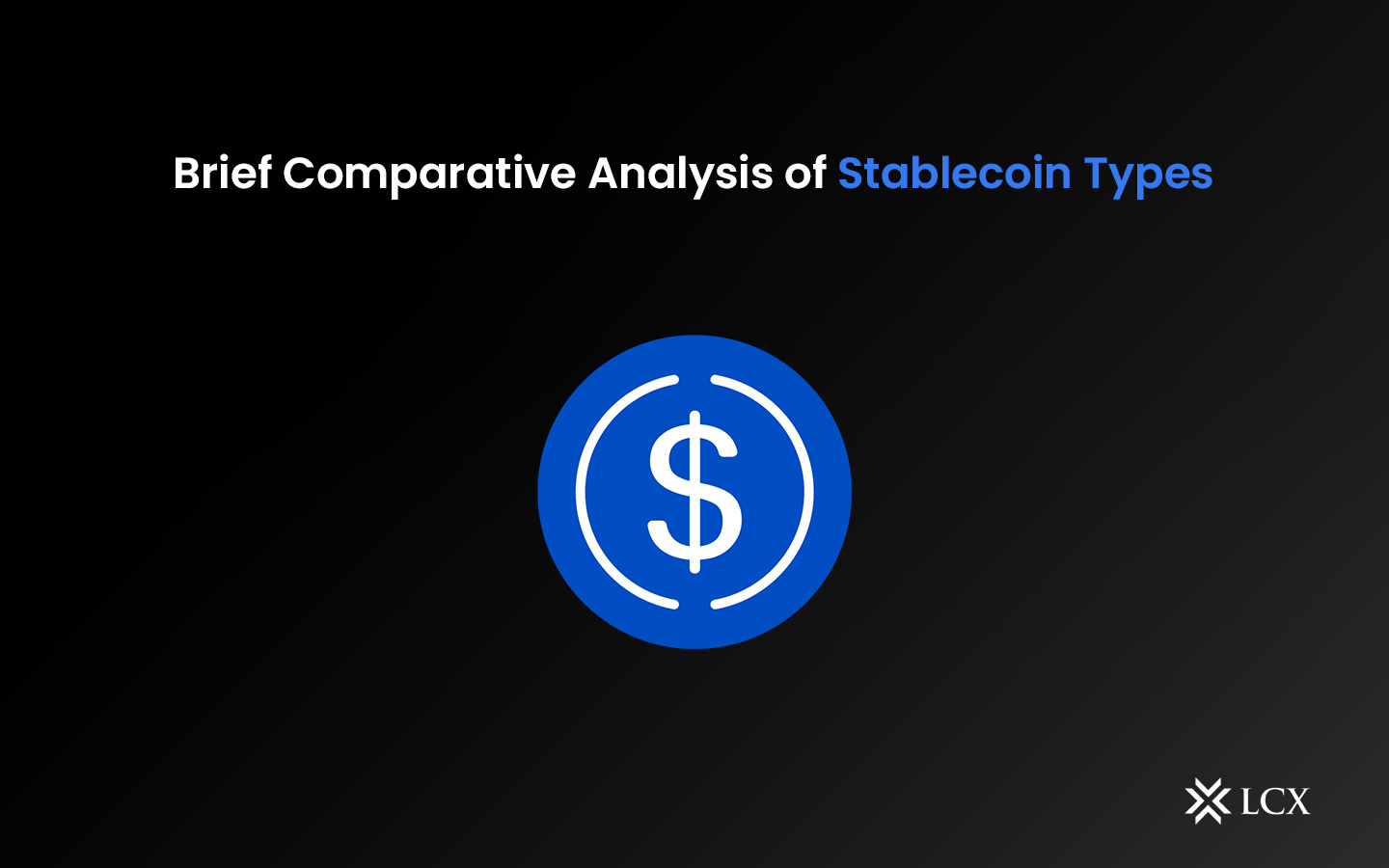Stablecoins are a type of digital currency that aims to provide investors with price stability, either by being secured by specific assets or by adjusting their supply based on demand.
The first stablecoin was issued in 2014, and since then, stablecoins have gained popularity because they offer the quickness and security of a blockchain without the volatility that most cryptocurrencies experience.
Stablecoins were predominantly used to purchase cryptocurrencies on trading platforms that lacked trading pairs with fiat currencies. Fiat currency refers to government-issued currencies that are not supported by precious metals or other commodities. Stablecoins are now used in several blockchain-based financial services, such as lending platforms, and to pay for products and services.
Stablecoins are blockchain-based versions of fiat currencies, meaning they are programmable and can interact with blockchain-based applications and smart contracts (which are agreements written in code that automatically execute).
Understanding Stablecoins
Popular cryptocurrencies such as Bitcoin are typically subject to significant volatility. Volatility refers to the degree of uncertainty associated with variations in an asset’s value. A higher level of volatility indicates that the asset’s price can fluctuate wildly in either direction over time, whereas a lower level of volatility indicates that the asset’s price is comparatively stable.
Volatility can be quantified in terms of daily returns by examining an asset’s percentage change in points (pips). During times of market turmoil, even the most popular cryptocurrencies frequently fluctuate by more than 10 percent, reducing their utility as mediums of exchange. As a medium of exchange, an asset facilitates the buying and selling of products and services.
To be used as a currency, an asset is expected to serve as a medium of exchange, a unit of account, and a store of value, which means that it must maintain its value, be used to determine the worth of products and services and facilitate commerce. Stablecoin technology’s most obvious advantage is that it can be used as a medium of exchange, bridging the divide between fiat and cryptocurrencies. By minimizing price volatility, stablecoins can achieve a completely different utility than traditional cryptocurrencies.
Stablecoins are intrinsically stable assets, which makes them a valuable store of value and encourages their use in everyday transactions. Additionally, stablecoins enhance the mobility of crypto assets throughout the ecosystem.
Stablecoin and fiat currency holders are aware that their holdings’ purchasing power will not change over short time periods and can be used to purchase products and services. Stablecoins are distinguished by their blockchain-based nature, as described above.
The majority of stablecoins are pegged to the value of a specific fiat currency, such as the U.S. dollar, or a specific commodity, such as gold. Being pegged implies a fixed price, so one stablecoin monitoring the U.S. dollar should be worth $1.
This fastener can be kept in place through a variety of mechanisms. Asset backing is the most prevalent method used by stablecoins. Asset backing refers to the proportion of stablecoin tokens in circulation to the quantity of underlying assets. A stablecoin is 1:1 backed if for every stablecoin in circulation, there are assets of equal value backing it.
Stable coins secured by the U.S. dollar will maintain their value so long as they are redeemable for the U.S. dollar. However, traders seeking to profit from price differences between markets will close the margin if its value fluctuates significantly in either direction.
What Are Stablecoins Used For?
Stablecoin holders can take advantage of a variety of opportunities due to the coin’s blockchain-based nature. The issuance of the first stablecoins as fiat currency replacements on exchanges provided investors with a secure haven from the volatility of other crypto assets.
In the decentralized finance (DeFi) space, stablecoins can now be used to lend at rates higher than those offered by conventional savings accounts or to obtain cryptocurrency-backed loans. Despite the fact that stablecoins may offer higher returns than conventional savings products, it is essential to note that stablecoin offerings do not include government-backed insurance.
Stablecoins have been issued on multiple blockchain networks that support smart contracts, and they are extensively utilised in the DeFi industry and on exchanges. On top of Blockchain networks that support smart contracts, applications such as decentralised exchanges (DEXs) can be developed. Decentralised exchanges are marketplaces where merchants conduct transactions directly with one another.
Stablecoins can also be used to pay salaries because they make international money transfers more affordable. For the transfer of funds on the blockchain, only a transaction charge is required. Furthermore, on the blockchain, international transactions are settled in a matter of seconds to an hour, contingent on a number of variables. This includes the type of network employed, the possibility of network congestion, the amount of fees paid, and the complexity of the transaction. The traditional financial system, however, can take days to resolve international transactions.
Stablecoins’ low volatility allowed investors to keep their funds on the blockchain while minimizing risk, whereas traditional cryptocurrencies do not have a fixed price and may fluctuate wildly.
Comparative Analysis of Types of Stablecoin
Types of Stablecoins Explained
Collateralized Stablecoins
Collateralized stablecoins are among the most common and widely used stablecoin types. These coins are backed by collateral assets, which are typically cryptocurrencies or other digital assets with intrinsic value.
Advantages:
- Stability: Collateralized stablecoins maintain a stable value as they are directly tied to the value of their underlying collateral assets.
- Liquidity: The collateral assets can be easily liquidated to maintain the coin’s peg to a stable value.
Disadvantages:
- Centralization: These stablecoins rely on centralized entities to manage and secure the collateral, which can raise concerns about transparency and trust.
- Counterparty Risk: Users are exposed to counterparty risk if the entity managing the collateral fails or mismanages the assets.
Algorithmic Stablecoins
Algorithmic stablecoins use algorithmic mechanisms to maintain stability without relying on collateral assets. Instead, these stablecoins adjust their supply based on market demand, often utilizing smart contracts and algorithmic protocols.
Advantages:
- Decentralization: Algorithmic stablecoins are typically more decentralized, reducing reliance on centralized entities.
- Flexibility: They are not tied to the value of physical assets, providing more flexibility in terms of scalability and collateral.
Disadvantages:
- Volatility: Algorithmic stablecoins can experience short-term fluctuations and may require constant algorithmic adjustments.
- Complexity: The algorithms governing these stablecoins can be complex and difficult for users to fully understand.
Hybrid Stablecoins
Hybrid stablecoins combine elements of both collateralized and algorithmic stablecoins. They maintain a collateral reserve while also using algorithms to stabilize the coin’s value.
Advantages:
- Enhanced Stability: Hybrids offer enhanced stability compared to pure algorithmic stablecoins due to collateral backing.
- Decentralization: They often maintain a higher degree of decentralization than fully collateralized stablecoins.
Disadvantages:
- Complexity: Like algorithmic stablecoins, hybrids can be complex due to the combination of mechanisms.
- Market Adoption: They may face challenges in gaining widespread adoption and understanding due to their unique characteristics.
Fiat-Collateralized Stablecoins
Fiat-collateralized stablecoins are backed by traditional fiat currencies, such as the U.S. dollar or the euro, held in reserve. For every unit of stablecoin issued, an equivalent amount of fiat currency is held in a bank account or with a trusted custodian.
Advantages:
- Stability: They are directly pegged to a widely recognized fiat currency, providing a high level of stability.
- Transparency: Fiat collateral is relatively transparent and audited by trusted third parties.
Disadvantages:
- Centralization: These stablecoins depend on centralized entities to hold and manage fiat reserves.
- Regulatory Risks: Being tied to fiat currencies can expose them to regulatory scrutiny and risks.
Commodity-Collateralized Stablecoins
Commodity-collateralized stablecoins are backed by physical assets, such as precious metals (e.g., gold or silver), real estate, or other commodities. These assets provide stability to the stablecoin’s value.
Advantages:
- Intrinsic Value: These stablecoins have intrinsic value due to the backing of tangible assets.
- Stability: Commodity prices tend to be more stable than cryptocurrencies.
Disadvantages:
- Storage Costs: Safeguarding physical assets can incur storage costs and may require third-party custodians.
- Limited Liquidity: Converting physical assets to fiat currency for redemption can be cumbersome.
Decentralized Stablecoins
Decentralized stablecoins aim to achieve stability without relying on centralized entities, collateral, or commodities. Instead, they use decentralized governance mechanisms, algorithmic controls, or decentralized collateral pools to maintain stability.
Advantages:
- True Decentralization: eliminates reliance on centralized intermediaries, enhancing trust and security.
- Flexibility: Decentralized stablecoins can be more adaptable and scalable.
Disadvantages:
- Complexity: Like algorithmic stablecoins, they can be complex to understand and may require significant governance involvement.
- Market Adoption: Widespread adoption and understanding may be a challenge due to their unconventional approach.
Comparative Analysis
Now that we have explored the types of stablecoins individually, let’s conduct a comparative analysis based on various criteria:
Stability: Fiat-collateralized and commodity-collateralized stablecoins tend to offer the highest stability due to their direct peg to recognized assets. Collateralized and hybrid stablecoins follow closely, while algorithmic and decentralized stablecoins may exhibit more short-term volatility.
Decentralization: Decentralized and algorithmic stablecoins generally offer the highest degree of decentralization. Collateralized stablecoins, especially those managed by centralized entities, are the least decentralized.
Transparency: Fiat-collateralized and commodity-collateralized stablecoins often provide transparency through regular audits of their underlying assets. Algorithmic stablecoins rely on transparent smart contracts, and decentralized stablecoins leverage blockchain transparency.
Complexity: Algorithmic and decentralized stablecoins can be complex to understand due to their innovative mechanisms. Collateralized and fiat-collateralized stablecoins are relatively straightforward.
Regulatory Risks: Fiat-collateralized stablecoins face regulatory scrutiny and may be subject to government actions. Decentralized stablecoins can be less susceptible to regulatory interference.
Use Cases: Collateralized stablecoins are often used for trading and as a store of value. Algorithmic stablecoins and hybrids may find use in decentralized finance (DeFi) protocols, while decentralized stablecoins aim to create stable economic ecosystems.
Liquidity: Collateralized stablecoins have the advantage of immediate liquidity through the conversion of collateral assets. Liquidity in other stablecoin types may depend on market demand and adoption.
Conclusion
In the rapidly evolving world of cryptocurrencies, stablecoins have become a crucial component, offering stability and utility to users and projects alike. The choice between the various stablecoin types depends on individual preferences, risk tolerance, and use cases.










